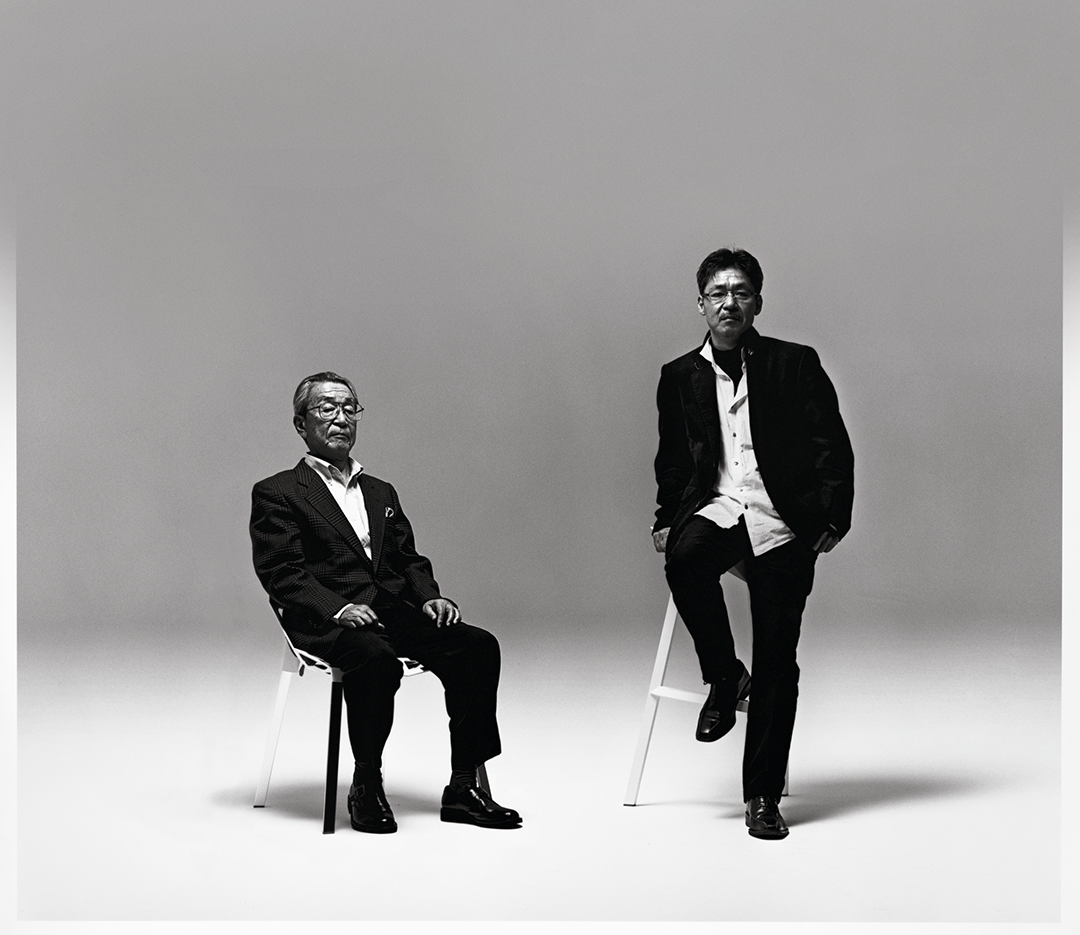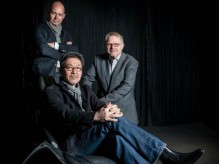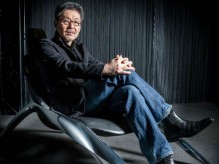Mention the name “Maeda-san” in a Mazda design department, and you are sure to get a reverent response. The last two generations of this family have shaped the look of the Mazda brand more than most, but they haven’t always seen eye to eye when it comes to design. Both legendary car designers at Mazda with some of the brand’s most influential models under their respective belts, Matasaburo and Ikuo Maeda are the design dynasty that shapes Mazda’s styling to this day.
A native of Hiroshima and engineer by training, Matasaburo Maeda joined Mazda in 1962 and within eighteen years he had progressed to General Manager of the Mazda Design Department from 1980 to 1987. Inspired by the German Bauhaus movement, Matasaburo was a firm believer in the principle “form follows function” and that every design detail should serve a purpose. This approach found its expression in such models as the boxy Mazda 929 HB, sold from 1981 to 1986. However, the crowning achievement of the first Maeda design era was the Mazda RX-7 – a classic rotary engine model still much celebrated by many Mazda fans today.
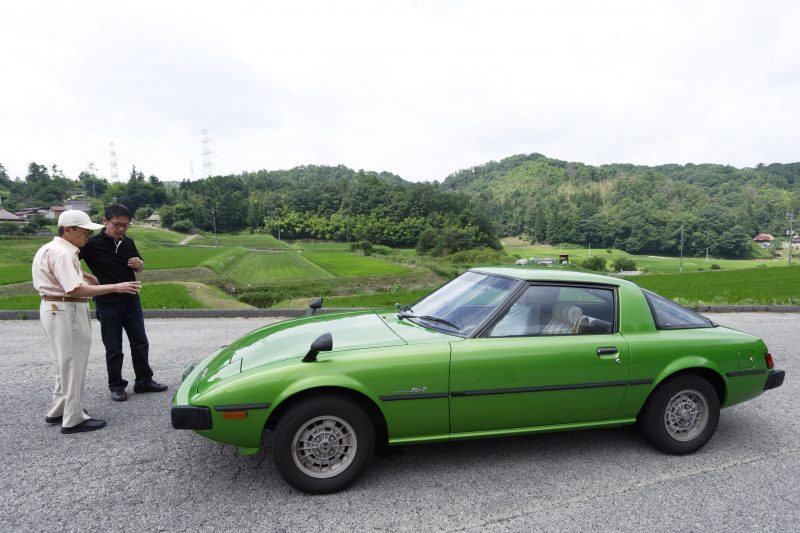
Launched in 1978, the Mazda RX-7 was Mazda’s first mass-market sports car and would go on to become the best-selling rotary powered vehicle in history. According to Matasaburo Maeda, three principles dictated the characteristic clear lines and sleek elegance of this rotary engine car. “First, I was looking for the best way to express the character of the rotary engine. Second, it was about reducing drag, and third, I envisioned the RX-7 with a classic front-mid engine layout” commented Matasaburo Maeda. The different geometry of the rotary engine allowed the designers to bring down the vehicle’s nose much deeper than usual. Together with the pop-up headlights, this created the sports car’s characteristic shape and the winning combination propelled the brand’s success on the race track to unprecedented levels.
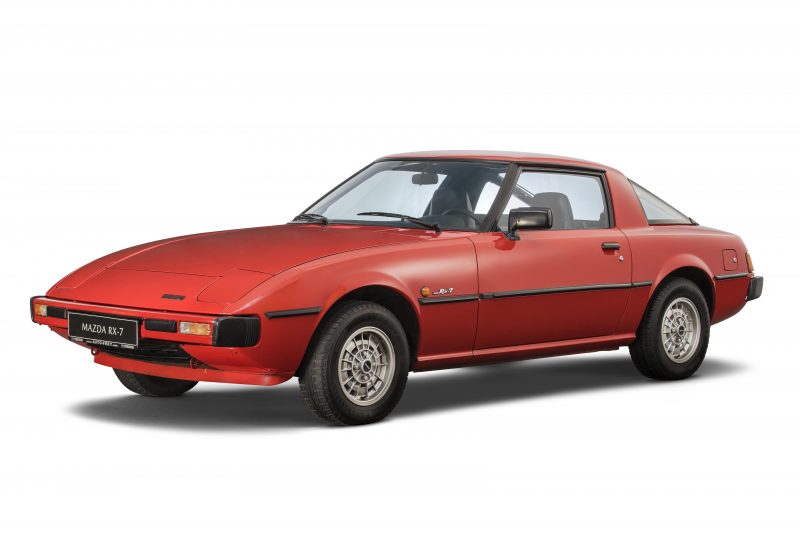
As the rotary engine played such a big role in shaping the RX-7’s design, it is not surprising that Matasaburo decided to bring engineers and modellers into the design process early. During his time at Mazda’s Design, Matasaburo Maeda developed a system of collaborative working between these three groups that is still the foundation of Mazda’s co-creation approach today. But, despite the enthusiasm with which Matasaburo tackled his tasks at Mazda, he left his work strictly at the office and refrained from talking about work in the family home.
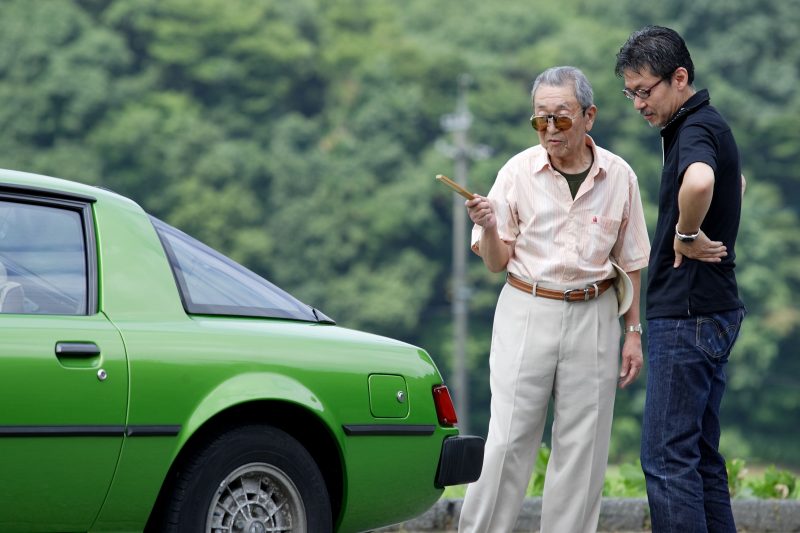
Young Ikuo Maeda initially had no mind at all to pursue a career in car design, despite an early love for cars – especially racing cars. According to Ikuo, it was Steve McQueen’s 1971 epic Le Mans, not his father, that made him want to go into the automotive sector. While studying industrial design at the Kyoto Institute of Technology, Ikuo Maeda bought his first car, a white RX-7, without even realising his father had designed the iconic Mazda model. Ikuo Maeda explains “I had bought this car simply because it was the fastest thing out there,”, who, not coincidentally, has had his licence revoked for speeding twice. And, he admits, “I thought it looked pretty good, too.”
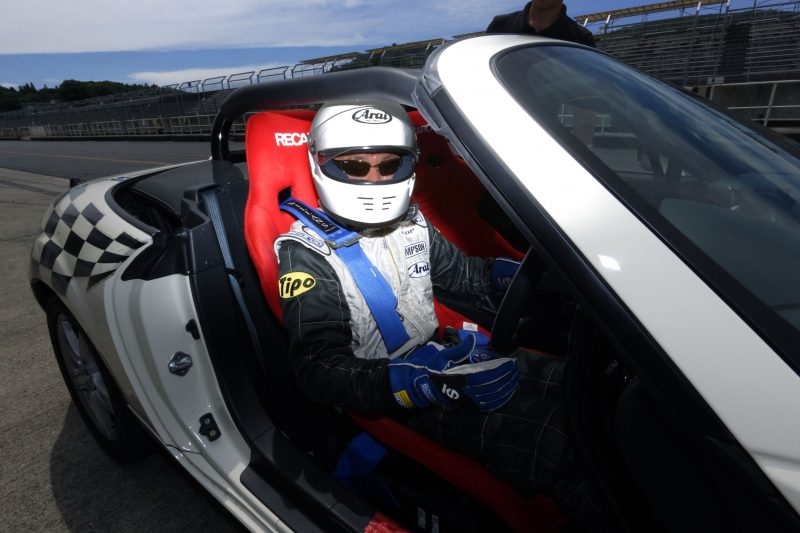
Ikuo Maeda started his career at Mazda in 1982 and progressed to the Yokohama Design Studio within three years. Inspired by the sensuality of Italian design and the dynamic energy of nature, Ikuo was assigned with the role of designing the successor to his father’s iconic RX-7. The Mazda RX-8 was designed as a powerful front engine with rear-wheel drive, combined with a coupe-like and sporty design. The styling was a classic statement of beauty in motion, reminiscent of a top athlete, while playing homage to the RX-7 with the shape of the rear pillars and rear window. True to form, Matasaburo Maeda only learned about his son’s involvement in the Mazda RX‑8 design about three months before the car went on sale in 2003.
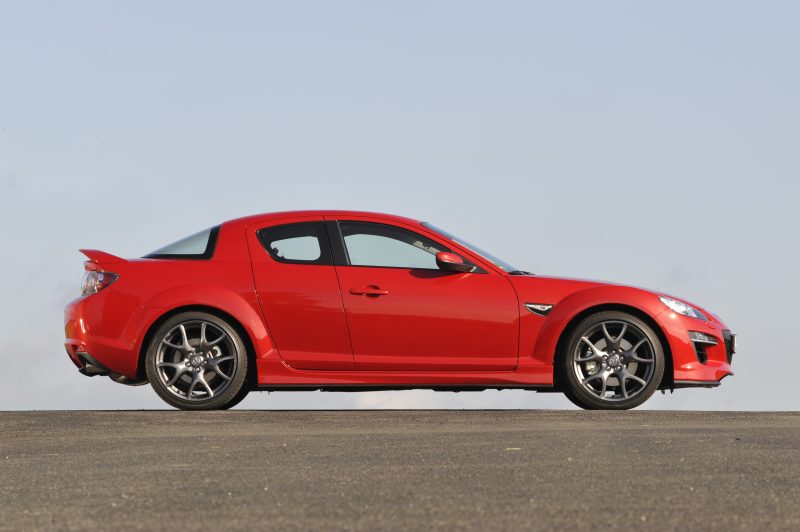
After taking the reins of Mazda Design as General Manager in 2009, Ikuo Maeda set a bold new direction for design at Mazda with the “Kodo Design” philosophy. Ikuo Maeda instilled his own, unique character into the new Kodo Design philosophy; the emotional impact and dynamic strength that he sometimes missed in his father’s more “quiet and sleek” designs. This emphasis on movement and changing forms is a central element of the design philosophy which aims to capture the beauty of movement in a still object. Many early designs in this new style were inspired by a cheetah about to pounce on its prey, including the Shinari and Mingai concepts.
As the Kodo Design concept evolved, Matasaburo Maeda’s influence on his son’s view of design started to become more pronounced. Like his father, Ikuo Maeda believed that less is more and that form should always follow function. Both Maedas clearly recall a defining moment in young Ikuo’s aesthetic education. While he was working on designs for the RX-7, Matasaburo Maeda gave his son a letter opener – a beautiful one, yet a very simple one. The glistening steel knife had been designed by Enzo Mari, a famous Italian designer and artist.
What made the design stand out was a twist that made it seem like a very strong man had taken the object and turned it by hand – a subtle yet very striking effect. “I wanted to convey to Ikuo how with one twist, a whole new expression could be achieved,” says Matasaburo. A lesson that his son certainly took to heart: “The encounter with this object represents a really important moment in my life. It is an object of essential form, really beautiful, but with a great deal of style content. It made me think – this is design”.
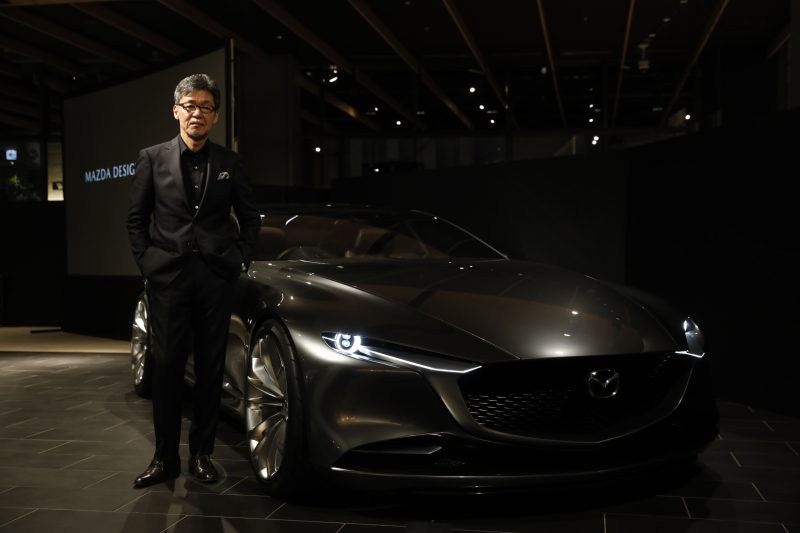
Dynamic beauty, minimal design, a strong presence built around frames became even more pronounced in the second phase of Kodo Design, starting with the concept car RX-Vision in 2015 and then the Vison Coupe in 2017. Mazda designers began stripping away any unnecessary elements, and even all character lines, from the vehicle body to create dynamic emotional forms through the interplay of light and shade – the “Soul of Motion” is played out on the side of the car. To many Mazda fans, the RX-Vision is still the epitome of this twofold aesthetic path Ikuo Maeda carved out for himself. With its emphasis on simplicity and elegance – not to mention the use of a rotary engine – the concept car is to some extent an homage to the Mazda design roots planted by Matasaburo Maeda years before.
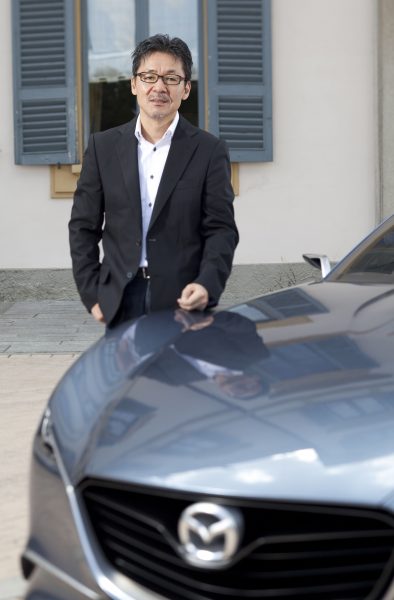
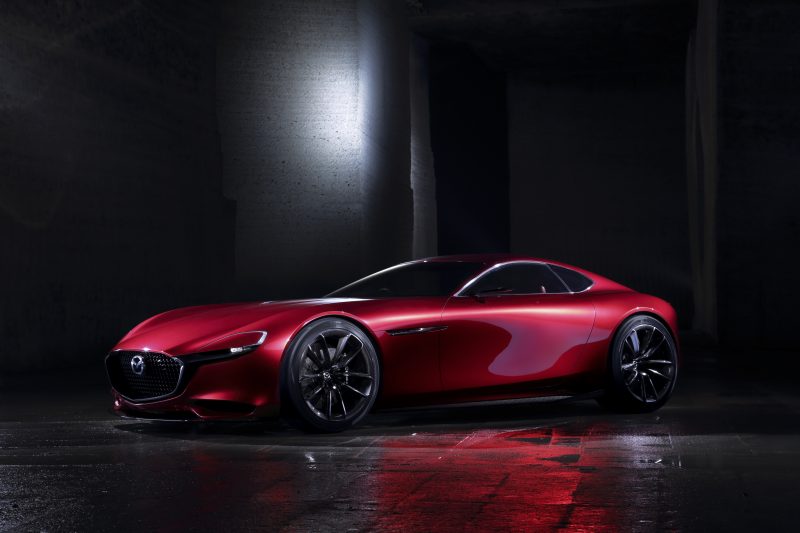
Since its inception ten years ago, Mazda’s Kodo Design philosophy has been the driving force behind multiple award-winning styling across the world. Both the RX-Vision and the Vision Coupe have being named the “Most Beautiful Concept Car of the Year” and the revamped Mazda MX-5 won the “World Car Design Award” in 2015. More recently, the Mazda CX-30 and the all-new MX-30 have won a Red Dot Award 2020 in the “Product Design” category, while the Mazda3 was named World Car Design of the year in the distinguished 2020 World Car Awards.
Not only has Mazda design been internationally recognised, Ikuo Maeda himself was honoured with the Design Hero accolade at the 2020 Autocar Awards. Adding to an impressive roster of prestigious global design awards received by Maeda-San and his team, the appreciation from Autocar acknowledges Maeda’s 35 years of success at Mazda and his vision and leadership in the creation and evolution of Mazda’s Kodo Design philosophy
Does that mean that, after years of hashing it out, the two Maedas are today on the same page when it comes to design? Far from it. In fact, design is still somewhat of a taboo subject at family reunions. “We hardly speak about design because we respect each other so much. We know that if we start debating design, it will only end badly. So we deliberately avoid the topic,” explains Ikuo Maeda. But, despite their creative differences, Matasaburo and Ikuo Maeda are the Mazda design dynasty that has shaped Mazda design forevermore.

